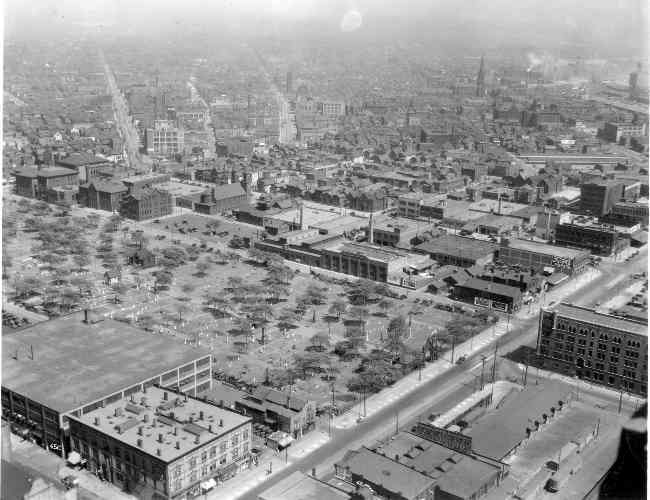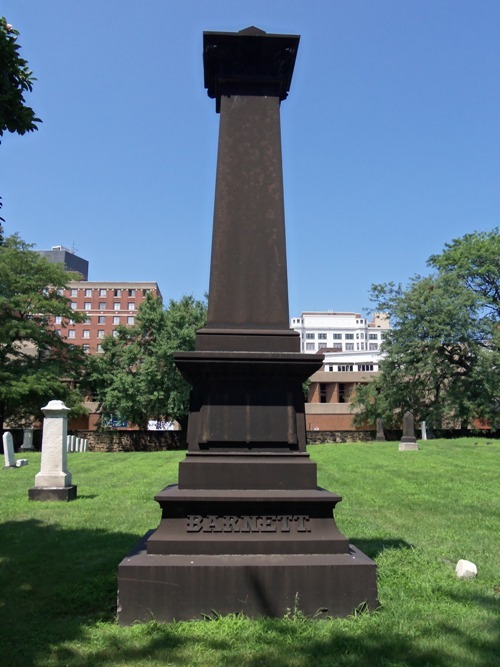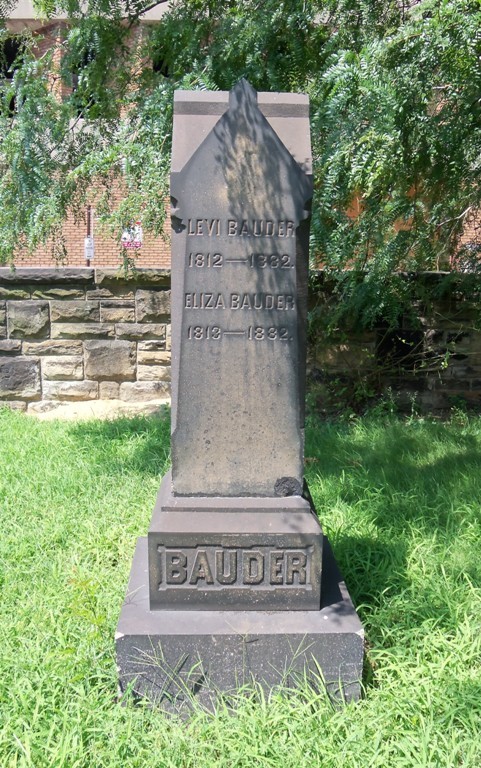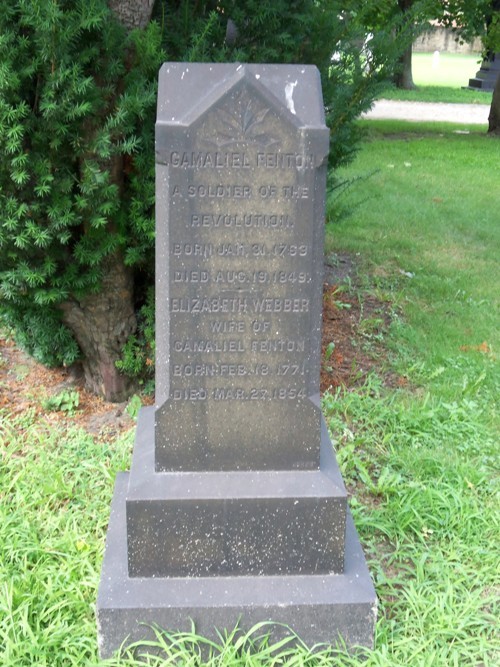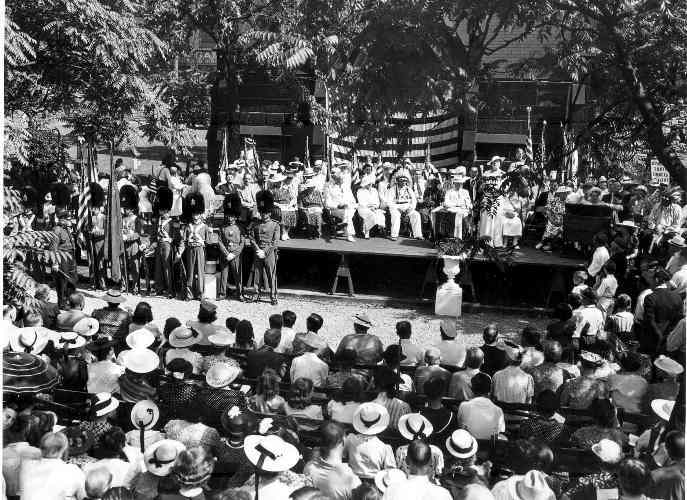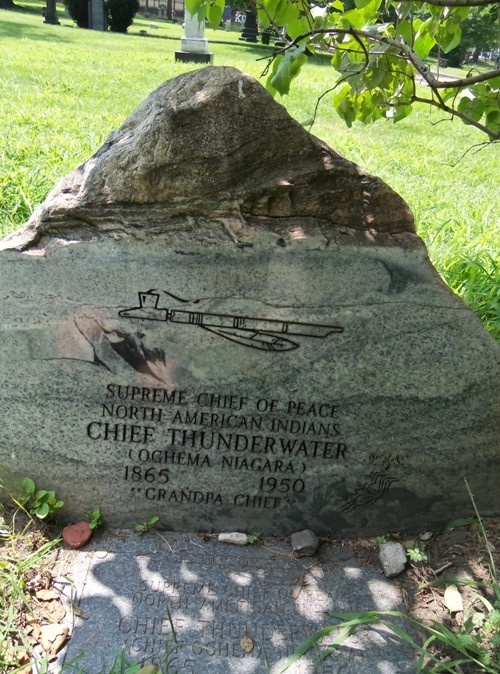
On East 9th Street, enclosed by a 19th century iron fence and Gothic gateway, is the Erie Street Cemetery - the final resting place of some of Cleveland's most notable pioneers and combatants. Located right next door to Progressive Field, even the popular baseball stadium is easily forgotten once you find yourself surrounded by the many weathered gravestones. Although not all are marked, there are almost 8,000 burials in the cemetery, the oldest dating back to 1827. Scattered among the graves are monuments that have been constructed to honor some of the cemetery's more famous occupants. Some of these include Joseph L. Weatherly, founder and first president of the Board of Trade of Cleveland; Lorenzo Carter, community leader and the first permanent settler of Cleveland; and Chief Joc-O-Sot, chief of the Mesquakie tribe who fought in the Black Hawk War.
There are 168 veterans buried in the Erie Street Cemetery who participated in the Revolutionary War through the Spanish-American War. 98 of these men owe their veteran status to their participation in the Civil War. For example, General James Barnett was an officer in the Civil War and was on the commission for the construction of the Soldiers and Sailors' Monument. He has both a family grave site and a monument. Also buried among fellow Civil War veterans is Jabez W. Fitch, best known for having charge of Camp Taylor, he later served in the 19th Ohio Volunteer Infantry.
Despite the many Cleveland pioneers and soldiers buried at Erie Street Cemetery, efforts were made to reclaim the land for other purposes in the early 20th century. Bodies were even removed to other cemeteries in the in order to make room for new streets. In 1915, the Pioneers' Memorial Association was formed and fought to keep the cemetery and all who remained there undisturbed. Since then efforts have been made to beautify the cemetery by groups like the Works Progress Administration and the Cleveland Grays. Today some markers are worn or broken to the point of being indecipherable, but the graves of numerous dignitaries and veterans can still be found.
Images

